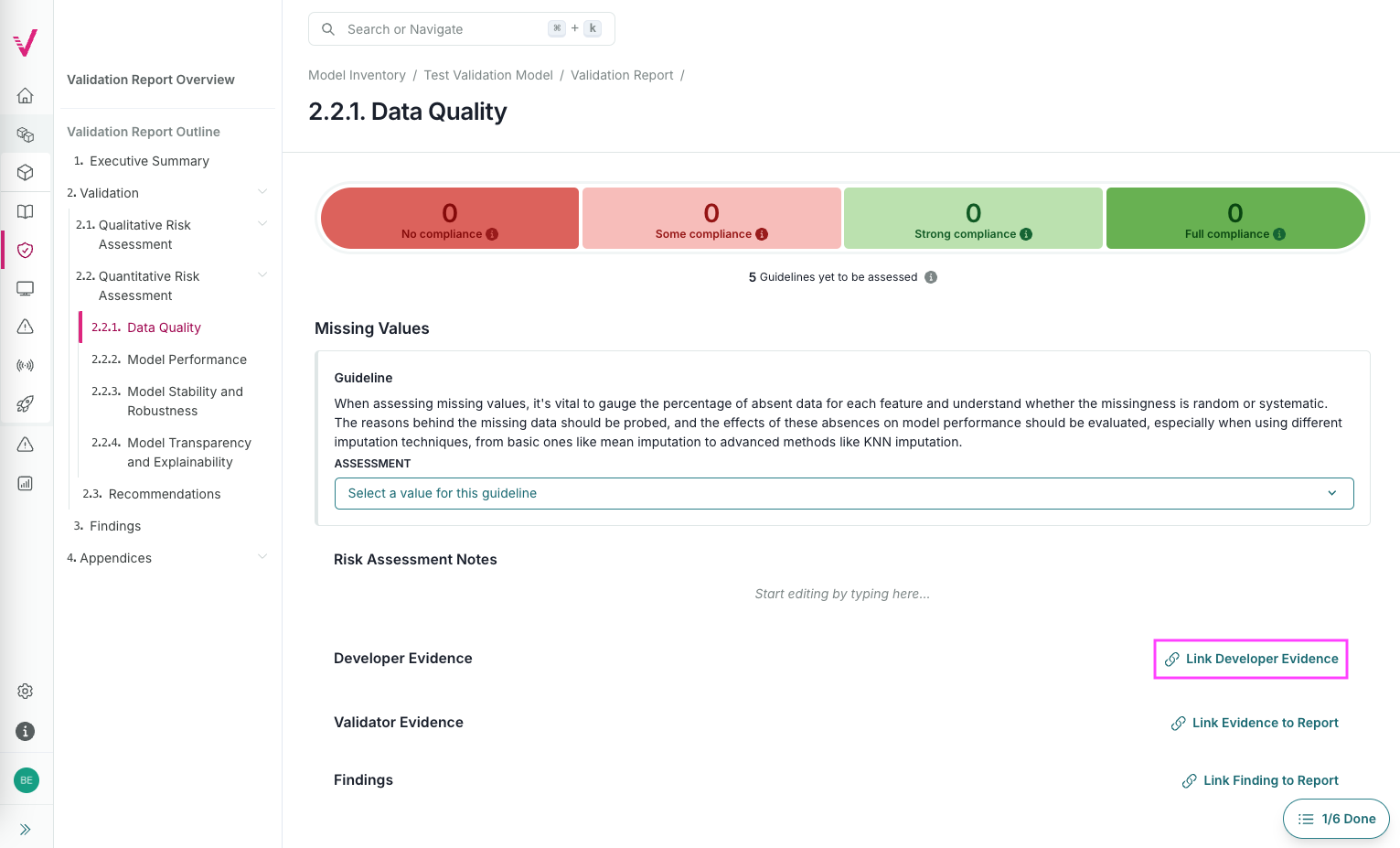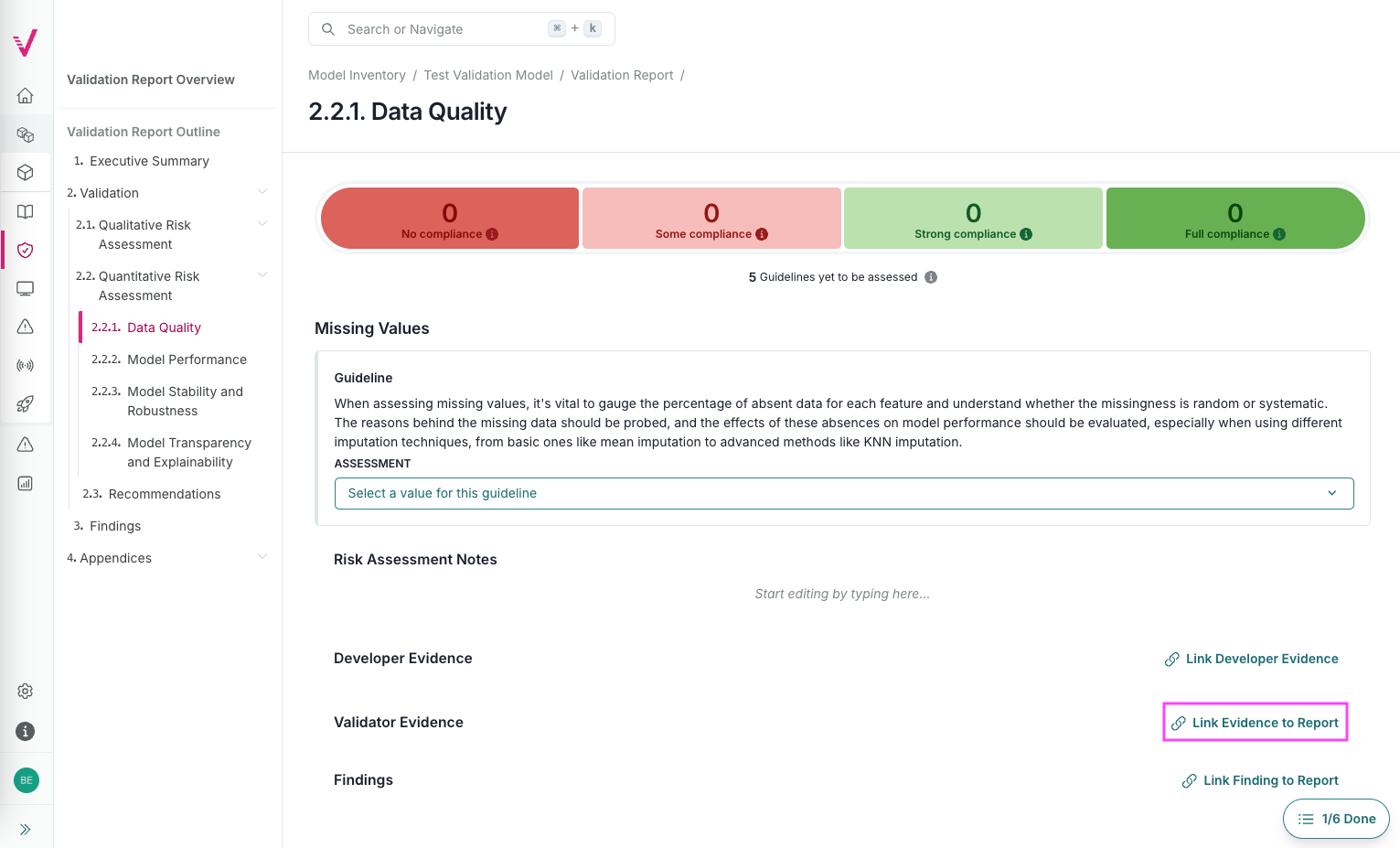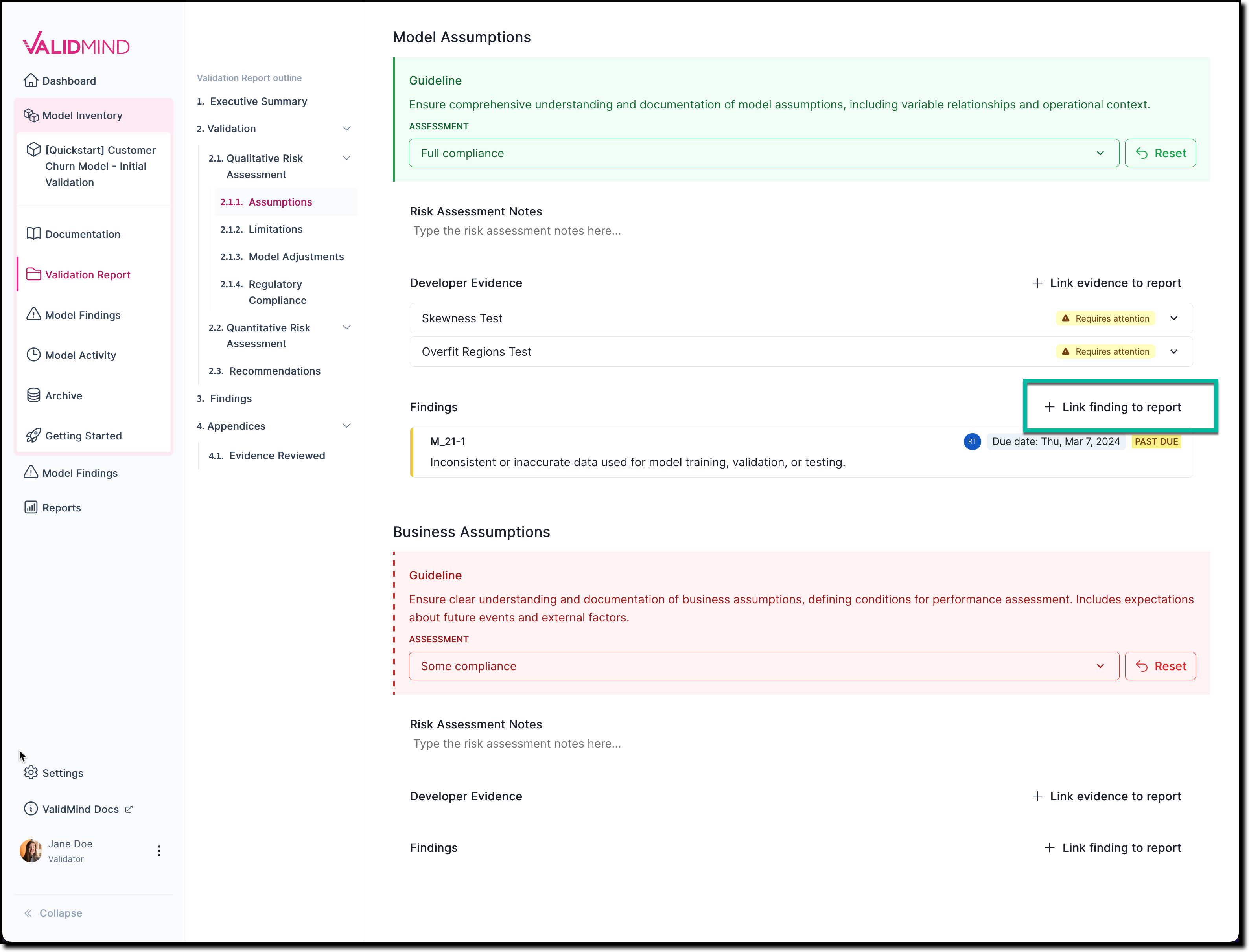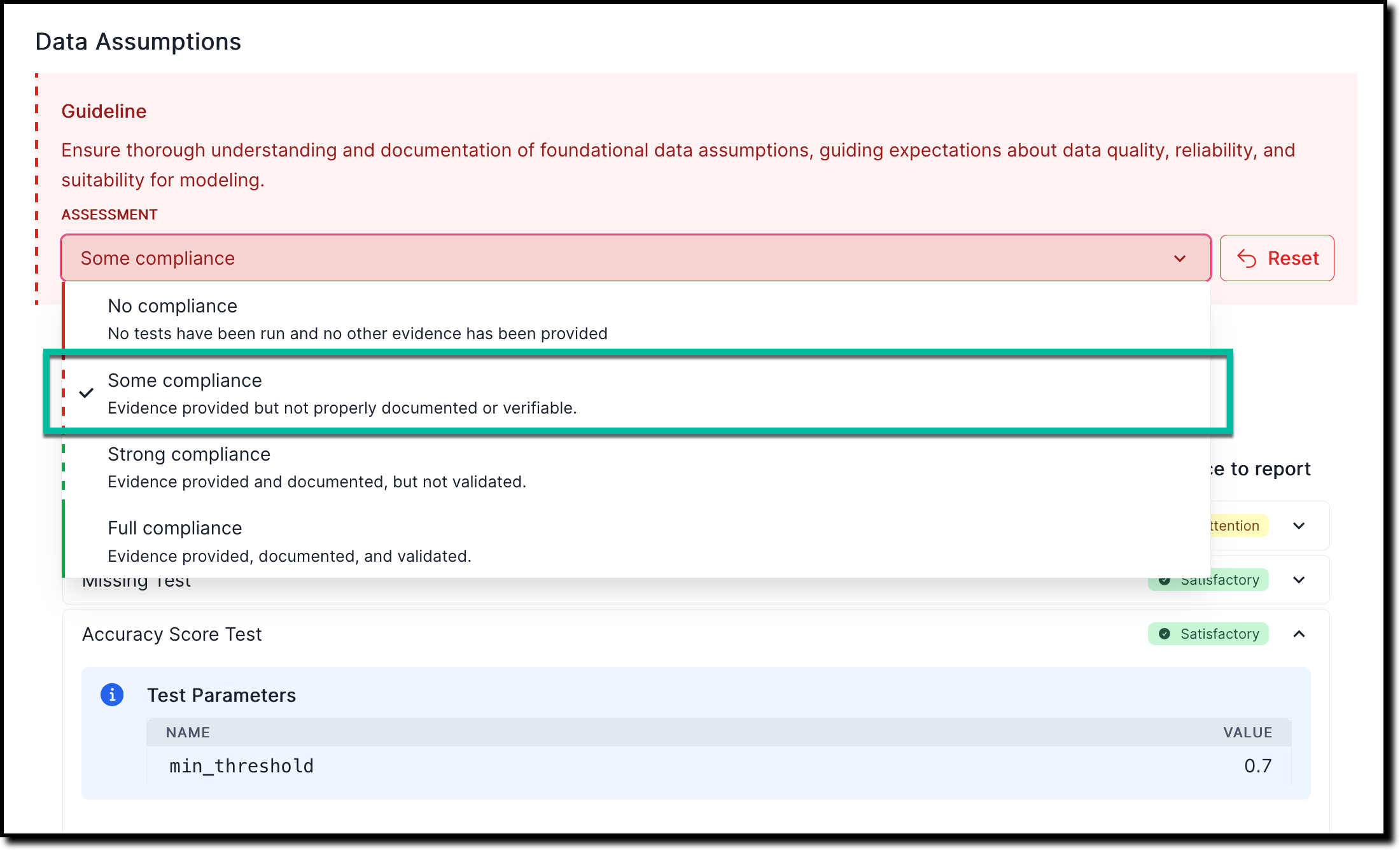Assess compliance
Use the ValidMind Platform to assess compliance of your models with guidelines based on analyzing evidence and findings.
Compliance assessments provide an unbiased starting point that enables more efficient discussions between validators and developers and involves three steps:
Prerequisites
Link evidence to reports
Link developer evidence
To link evidence logged by developers4 to your validation report:
In the left sidebar, click Inventory.
Select a model or find your model by applying a filter or searching for it.5
In the left sidebar that appears for your model, click Documents and select a Validation Report type file.6
Expand any subsection of the validation report you would like to work with.
For example, locate 2. Validation then select 2.1.1. Assumptions.
In any section of the report where the button is available, click Link Developer Evidence.
On the Link Developer Evidence to Validation Report page that opens, select the evidence that is related to your assessment.
- Available evidence is associated with the relevant documentation section.
- If you are not sure if something is relevant, you can expand the section by clicking for more details.
Click Update Linked Evidence.
- Confirm that the newly linked-to evidence shown under Developer Evidence is accurate and is connected to the correct documentation section.
- Evidence that needs your attention gets flagged with Requires Attention. These sections get flagged automatically whenever a test result is above or below a certain threshold.
Link validator evidence
In the left sidebar, click Inventory.
Select a model or find your model by applying a filter or searching for it.8
In the left sidebar that appears for your model, click Validation Report under Documents.9
You can now expand any subsection of the validation report you would like to work with.
For example, locate 2. Validation then select 2.1.1. Assumptions.
In any section of the report where the button is available, click Link Evidence to Report.
On the Link Validator Evidence to Validation Report page that opens, select the evidence that is related to your assessment.
If you are not sure if something is relevant, you can expand the section by clicking for more details.
Click Update Linked Evidence.
- Confirm that the newly linked-to evidence shown under Developer Evidence is accurate.
- Evidence that needs your attention gets flagged with Requires Attention. These sections get flagged automatically whenever a test result is above or below a certain threshold.
Link findings to reports
In the left sidebar, click Inventory.
Select a model or find your model by applying a filter or searching for it.10
In the left sidebar that appears for your model, click Documents and select a Validation Report type file under Documents.11
Expand any subsection of the validation report you would like to work with.
For example, locate 2. Validation then select 2.1.1. Assumptions.
In any section of the report where the button is available, click Link Finding to Report and select the finding type12 you want to add:
- Validation Issue
- Policy Exception
- Model Limitation
On the Link Finding to Report modal that opens, select from the list of available findings, or click Add {x} Finding where
{x}is the type of finding.13Click Update Linked Findings.
Confirm that newly linked finding shown under Findings is accurate.
Provide compliance assessments
In the left sidebar, click Inventory.
Select a model or find your model by applying a filter or searching for it.14
In the left sidebar that appears for your model, click Documents and select a Validation Report type file.15
Expand any subsection of the validation report you would like to work with.
For example, locate 2. Validation then select 2.1.1. Assumptions.
In any section of the documentation where the assessment dropdown menu is available, select one of the available options:
- No compliance — No tests have been run and no other evidence has been provided.
- Some compliance — Evidence provided but not properly documented or verifiable.
- Strong compliance — Evidence provided and documented, but not validated.
- Full compliance — Evidence provided, documented, and validated.
For example, to indicate that there is some compliance based on the evidence or findings you linked to:
Validation report section 2.1.1. that shows a compliance assessment with the option to link to finding Confirm that the compliance summary shown for each subsection under 2. Validation provides an accurate overview for current qualitative and quantitative risk assessments:
Click under Risk Assessment Notes to add your risk assessment notes for that section using the content editing toolbar.16




